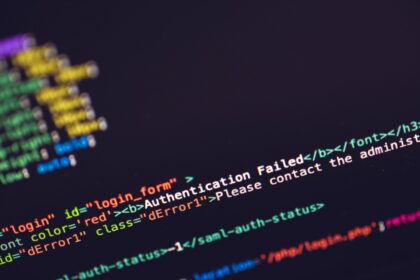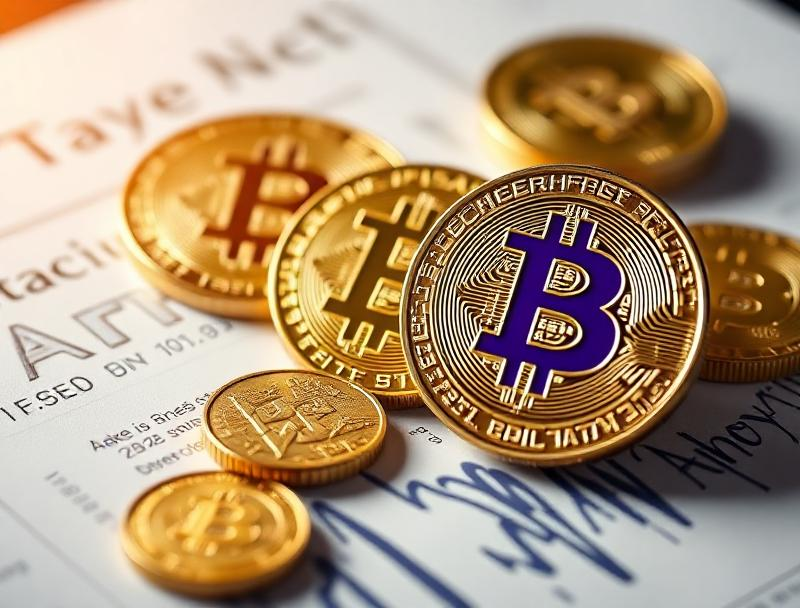Start by verifying the authenticity of social platforms before engaging. Many groups on Discord and Telegram may impersonate legitimate networks, so always cross-check official sources such as project websites or verified social media accounts. Avoid clicking on suspicious invitation links and instead use invites shared by trusted contacts or found on credible pages.
Enable two-factor authentication (2FA) on all accounts connected to these spaces. Whether it’s Discord or Telegram, 2FA adds an important layer of protection against unauthorized access. Regularly update passwords and never reuse credentials from other services to minimize risks from potential data leaks.
Familiarize yourself with common security pitfalls within these environments. Beware of unsolicited direct messages asking for private keys, seed phrases, or personal information. Legitimate group admins will never request sensitive details. Use privacy settings to limit who can contact you and report suspicious behavior promptly.
Participate in communities that maintain transparent moderation and clear rules. Active moderators reduce scams and spam while fostering respectful discussions. Look for pinned announcements about security measures and community guidelines which indicate a commitment to member safety.
Regularly update software clients used to access messaging platforms. Older versions of Discord or Telegram might have vulnerabilities exploited by attackers. Keeping apps current ensures access to the latest security patches, helping protect your conversations and account data from compromise.
How to Join Crypto Communities Safely
Prioritize verifying the authenticity of groups before engaging on platforms like Discord or Telegram. Scammers frequently create fake servers or channels mimicking popular projects to steal information or funds. Always cross-check invitation links through official websites or trusted social media profiles linked directly to the project’s verified accounts.
Implementing strong security measures within these social environments is critical. Enable two-factor authentication (2FA) on your messaging accounts and avoid sharing private keys, seed phrases, or passwords under any circumstances. Legitimate community moderators will never request sensitive information, so stay vigilant against phishing attempts disguised as friendly guidance.
Technical Steps to Participate in Social Crypto Spaces
When exploring blockchain interest groups, start by researching their moderation policies and member activity. Active communities with transparent rules tend to maintain higher security standards. For example, reputable Discord servers use role-based access controls restricting spam and malicious links, while Telegram groups often employ bots that filter harmful content automatically.
Engage gradually by observing discussions before contributing personal details or financial information. Use pseudonymous accounts where possible to limit exposure until trustworthiness is established. Many successful participants recommend employing dedicated wallets with minimal balances when interacting with unknown entities online–this reduces potential losses if a compromise occurs.
- Verify invitations: Confirm links come from verified sources related to the project.
- Enable security features: Activate 2FA and device-specific permissions in Telegram and Discord settings.
- Monitor moderation: Check for active admins who enforce clear anti-scam protocols.
- Avoid sharing secrets: Never disclose private keys or recovery phrases during chats.
- Use separate wallets: Allocate small amounts for interactions in new communities.
Case studies illustrate risks tied to inattentive behavior: In 2021, a high-profile NFT Discord server was compromised due to weak administrative controls. Attackers distributed malicious files via chat, leading users to lose assets worth thousands of dollars. Conversely, well-moderated Telegram groups employing bot filters saw significantly fewer incidents reported over the same period.
The combination of cautious participation and technical safeguards fosters an environment where newcomers can confidently explore blockchain topics without unnecessary risk exposure. Gradual integration into social networks centered around decentralized technology allows learning through observation while maintaining personal data integrity and asset protection throughout the experience.
Identify Trusted Community Platforms
The first step in finding reliable social channels involves verifying the authenticity of official sources. For example, many legitimate blockchain projects maintain verified Telegram groups and Discord servers, often linked directly from their official websites or reputable industry portals. It is advisable to cross-reference these links to avoid phishing attempts and ensure that participation occurs within secure environments.
Security protocols on platforms like Telegram and Discord vary significantly, so understanding how each handles user data and moderation helps mitigate risks. Telegram’s end-to-end encryption in private chats offers strong privacy for direct communication, but group chats lack this level of protection by default. Discord, conversely, provides granular permission controls that enable community managers to restrict access and manage roles effectively, which can enhance overall security when implemented properly.
Evaluating Platform Integrity Through Technical Indicators
One practical method to assess trustworthiness is examining community activity metrics–such as member count consistency, message frequency, and moderator responsiveness. Bots that automatically verify new entrants or detect malicious links add a layer of safety by reducing spam and potential scams. In addition, transparent governance structures where moderators enforce clear rules contribute to maintaining a secure atmosphere.
Case studies reveal that well-established crypto forums utilize multi-factor authentication (MFA) for administrator accounts to prevent unauthorized access. For instance, several DeFi projects maintain active Discord servers with MFA-protected admin panels combined with continuous monitoring tools that flag suspicious behavior patterns in real time. Such measures are crucial for preventing impersonation or infiltration by bad actors.
- Check platform verification badges or official announcements confirming legitimacy.
- Review moderation policies and responsiveness speed on reported issues.
- Observe the presence of automated security bots handling link scanning.
Newcomers should also pay attention to community feedback across multiple channels including Reddit threads and Twitter feeds where users discuss their experiences regarding platform safety. These external reviews often highlight hidden risks such as phishing scams disguised as giveaway promotions or fake wallet applications shared within unregulated spaces.
Lastly, adopting personal security habits enhances protection while interacting on social platforms. Avoid sharing private keys or personal identification details even in trusted groups; use hardware wallets for transaction approvals; and consider separate email addresses tied exclusively to blockchain-related registrations. Combining vigilant platform selection with sound cybersecurity practices ensures a safer engagement with digital asset networks overall.
Verify admin and member identities
The primary step to ensure security within social platforms like Telegram or Discord is to authenticate the identities of administrators and participants before engaging in discussions or transactions. Many malicious actors impersonate admins by copying usernames, profile pictures, or group names to trick newcomers. Checking for verified badges on Telegram channels or official Discord servers helps distinguish genuine moderators from impostors. Additionally, cross-referencing admin profiles with their public blockchain activities or linked social media accounts adds a layer of trustworthiness.
On Telegram, admins often use two-factor authentication (2FA) and maintain transparency through pinned messages containing links to official websites or verifiable contact details. In Discord environments, server owners can enable membership screening features that require users to accept rules verified by trusted moderators before gaining full access. These technical controls reduce the risk of infiltration by fake profiles masquerading as legitimate members.
Technical approaches to identity verification
One effective method involves analyzing account creation dates and interaction histories; newly created profiles with minimal activity often signal caution, especially if they claim administrative privileges immediately after joining. Tools such as Telegram’s “Last Seen” status and Discord’s audit logs provide insights into user behavior patterns. Combining these with manual checks–like requesting proof of identity via direct message or requiring participation in voice chats–can clarify authenticity.
Implementing cryptographic proofs further enhances validation processes. For instance, admins might sign messages using their private keys associated with known wallet addresses, which users can verify independently on public block explorers. This approach minimizes reliance on superficial profile elements vulnerable to forgery and strengthens confidence when collaborating within decentralized networks.
Set up secure communication methods
To ensure protection within online networks, it is critical to configure encrypted messaging platforms properly before engaging in any discussions. Applications such as Telegram and Discord offer encryption options that must be activated manually; this significantly reduces interception risks during conversations. For example, enabling Telegram’s Secret Chats provides end-to-end encryption, which prevents third parties from accessing the content of messages.
Using two-factor authentication (2FA) on these platforms adds an additional layer of defense against unauthorized access. Both Telegram and Discord support 2FA through authenticator apps or SMS codes. Activating this feature limits potential breaches caused by stolen passwords or compromised accounts, reinforcing overall account integrity.
Choosing the right communication tools and settings
Selecting communication channels with robust security protocols is a priority when interacting within social networks focused on blockchain topics. Discord servers often include features like role-based permissions and audit logs that help administrators monitor user activity and restrict sensitive information sharing to trusted members only. Setting up private channels further isolates confidential discussions from public exposure.
An effective approach involves regularly updating software clients for messaging applications to benefit from the latest security patches and protocol improvements. Outdated versions may contain vulnerabilities that hackers exploit to intercept data or inject malware. For instance, periodic updates in Telegram have fixed flaws related to group privacy controls and message forwarding restrictions.
Implementing secure key exchange processes strengthens trust among participants. Utilizing external tools like PGP (Pretty Good Privacy) or similar cryptographic methods allows individuals to verify identities independently before sharing sensitive information through chat services. This practice mitigates impersonation risks often encountered in online groups dedicated to digital asset discussions.
- Avoid linking personal phone numbers publicly;
- Create unique usernames not tied to real identities;
- Verify new members through multi-step validation procedures;
- Refrain from clicking suspicious links shared within chats;
- Use VPN services to mask IP addresses during participation.
Following these guidelines helps maintain confidentiality while fostering a safer environment for exchanging knowledge about blockchain technology. By combining encrypted communications with cautious behavioral practices, individuals can protect their privacy effectively when engaging in interactive forums centered around decentralized finance or token projects.
Avoid sharing personal information
Refraining from disclosing personal data when interacting on platforms such as Telegram and Discord significantly reduces the risk of identity theft and phishing attacks. Many malicious actors exploit social channels dedicated to blockchain discussions by impersonating trusted members or admins, aiming to extract sensitive details. Users should never share full names, addresses, phone numbers, or private keys within chats or public profiles to maintain operational security.
Security breaches in decentralized networks often begin with seemingly harmless oversharing on social media or messaging groups. For example, revealing your email linked to a crypto wallet can lead to targeted hacking attempts via password resets or social engineering. It is advisable to use pseudonyms and separate contact information exclusively for blockchain-related interactions, minimizing exposure and potential correlation between online activity and real-world identity.
Practical steps for maintaining privacy in digital forums
Implementing two-factor authentication (2FA) on Telegram and Discord accounts enhances security layers but does not replace cautious behavior regarding personal disclosures. Avoid posting screenshots containing wallet addresses tied to your identity or transaction histories that could reveal financial status. Even metadata embedded in images may leak location data unless properly sanitized.
Studies show that scammers frequently scan public conversations for clues leading to account compromise. A well-documented case involved a phishing campaign targeting users active in several cryptocurrency discussion groups where attackers harvested usernames linked to real names found through careless profile descriptions. This underlines why limiting profile visibility and refraining from linking social accounts strengthens defense mechanisms against intrusions.
Consider setting strict privacy settings within the messaging applications and use encrypted communication tools whenever possible. When community members request verification, prefer methods that do not involve sharing personal documents but instead rely on cryptographic proofs such as signed messages from your wallet address. This approach preserves anonymity while confirming legitimacy without risking sensitive information leakage.
Recognize and Report Scams: Strengthening Security in Social Platforms
Prioritize verifying identities and information within channels like Telegram and Discord before engaging. Many fraudulent actors exploit the openness of these platforms by mimicking legitimate groups or administrators, deploying phishing links, or offering fake giveaways. Developing the habit of cross-referencing announcements with official sources significantly reduces vulnerability to manipulation.
Reporting suspicious behavior promptly to platform moderators or using built-in abuse-reporting tools enhances collective defense mechanisms. Transparency in sharing scam indicators–such as unusual wallet addresses, unsolicited private messages, or requests for sensitive data–helps build resilient networks that can adapt their security protocols effectively.
Technical Insights and Future Directions
The intersection of social interaction and blockchain technology demands advanced vigilance in safeguarding user assets and data. Smart contracts embedded within community-driven projects can automate verification steps, reducing human error when confirming legitimacy. For example:
- Multi-signature wallets enforce transaction approvals from multiple trusted parties, minimizing risks from compromised accounts.
- Decentralized identity solutions (DIDs) allow users to prove authenticity without exposing personal details on public channels.
Looking ahead, enhanced AI-based monitoring tools integrated into popular messaging services may detect anomalous patterns faster than manual oversight allows.
- Real-time analysis of message metadata could flag coordinated phishing attempts across multiple servers.
- User behavior analytics might identify newly created accounts exhibiting typical scammer activity within hours rather than days.
This evolution will necessitate continuous education about emerging attack vectors while encouraging active participation in community governance models to maintain high trust standards.
The ongoing refinement of these mechanisms will empower individuals engaging in decentralized ecosystems to interact with greater confidence. Encouraging proactive scrutiny combined with technological safeguards creates a symbiotic relationship between users and platforms that strengthens overall protection against deceitful schemes.
Your active role in identifying red flags and escalating concerns directly contributes to safer environments where innovation thrives without compromise. Cultivating this awareness not only protects personal interests but also reinforces collective integrity across interconnected networks moving forward.





